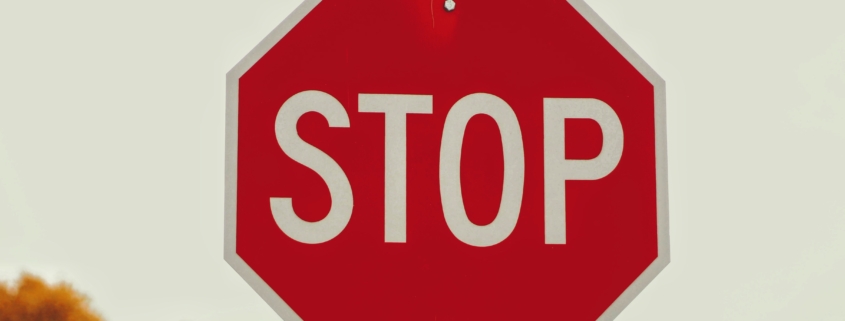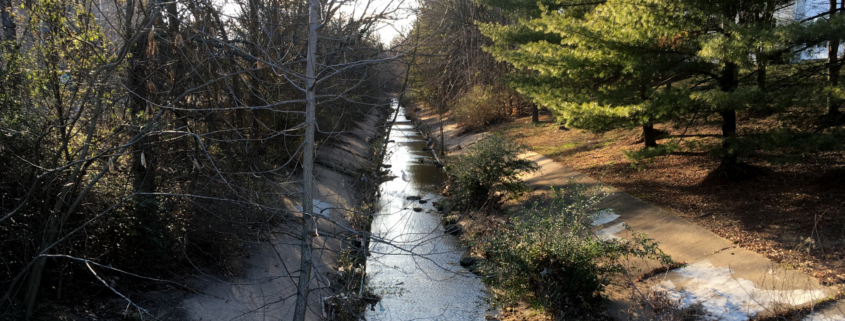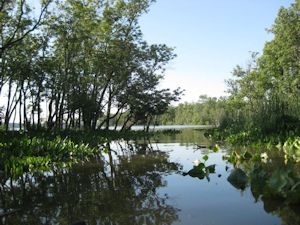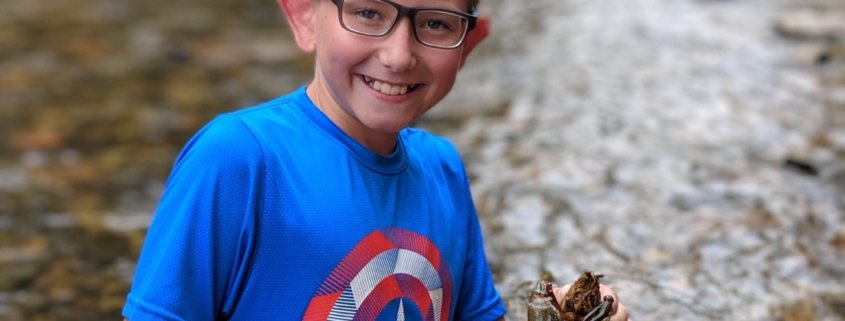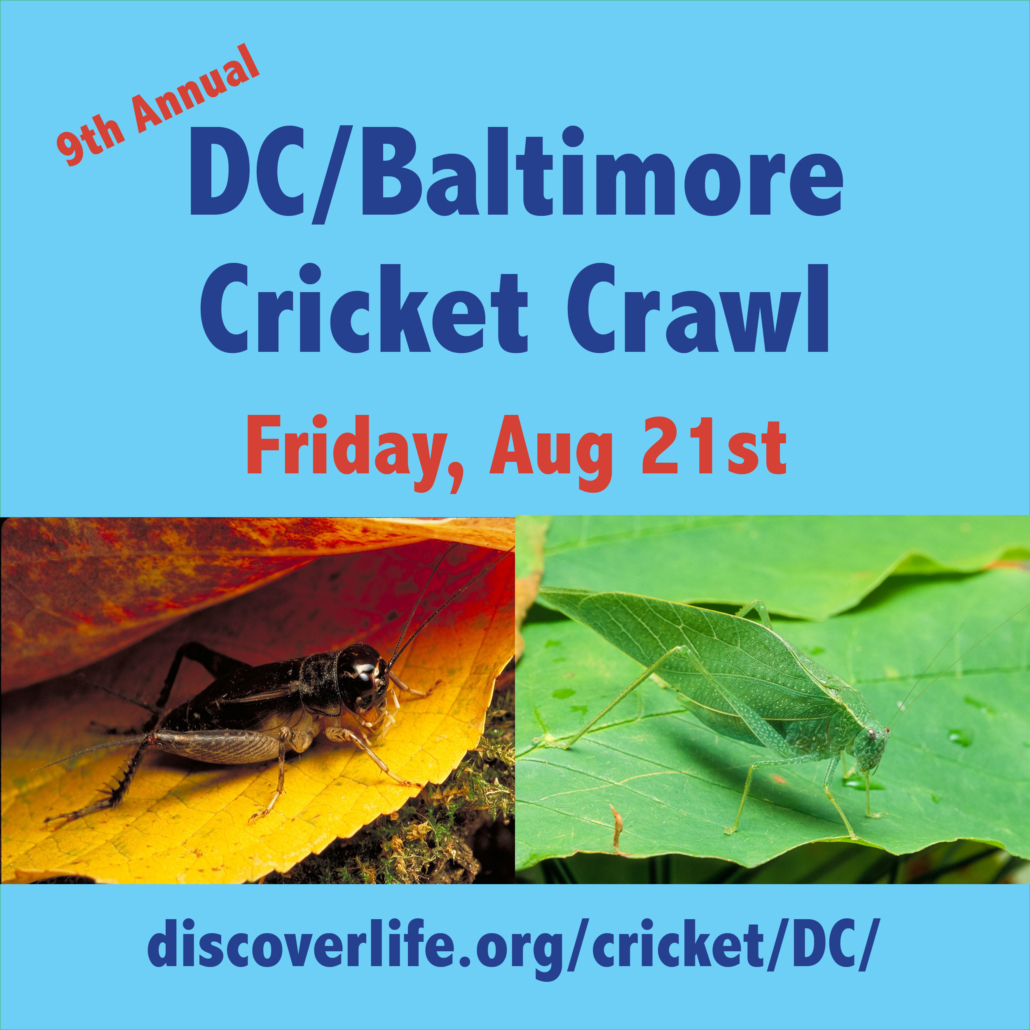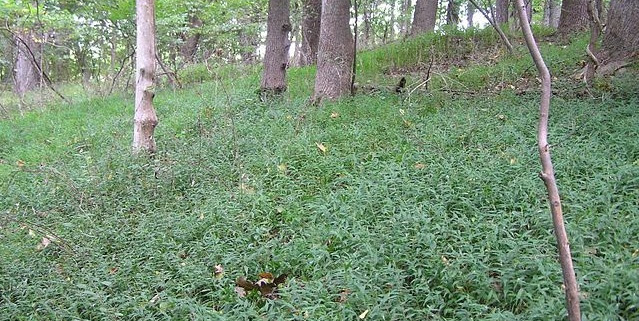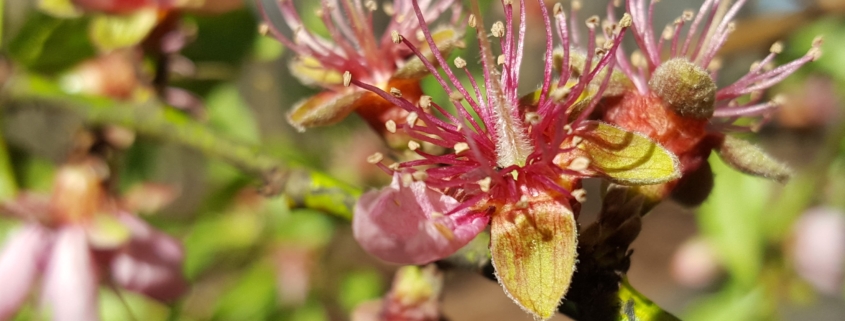Photo: Ana Ka’Ahanui
Margaret Fisher
Fragrant flowers can add a whole extra dimension to gardening, and the flowers of native plants are no exception. The scents are there for the sake of the pollinators, but we can enjoy them as well. If you try putting your nose up to every flower you meet, you will have some interesting surprises.
Modern day humans are good at identifying human-made smells such as suntan lotion or diesel fumes but are pretty oblivious to the smells of nature. This may be partly from lack of practice and partly because of our species’ tendency to run roughshod over the planet which includes the olfactory environment as well. If we pay attention, though, we can experience some of the sensations that are so important to other animals. Can you sometimes predict a rainstorm by the smell of the air? You already have developed some skill at interpreting nature’s cues. That slightly metallic odor is ozone, pushed down by atmospheric disturbances. If you have a dog, he or she may have introduced you to the scent of foxes, which is surprisingly strong and similar to a skunk. Once you learn to recognize it, you may find yourself spotting foxes that would have sneaked by you otherwise. The smell released by rain after a long dry spell has its own name – petrichor – and is created by a combination of chemicals released by plants and soil bacteria.
As you walk along in the woods, you will notice that the scent of life and decay (which is actually just more life) is subtle and complex but distinct enough for you to know when you are passing from one layer to another. In this unusual year when so many people are out walking their neighborhoods, one local resident has watched as folks stop in front of the Common Milkweed that volunteered itself near her sidewalk. Some people comment on the beautiful flower, one person only noticed the bees, but many were brought to a halt by the intoxicating fragrance. So many people inquire about it that she plans to put up a sign.
Why not create a natural olfactory landscape in your own yard? Planting fragrant native plants is the perfect way to do that while simultaneously pleasing the butterflies. Many have sweet smelling flowers, some faint, some strong. Some are a little unusual. The tall white spires of Black Cohosh, for example, smell simultaneously sweet and barn-like. Wild Bergamot smells like, well, bergamot, which gives Earl Gray tea its flavor. The flowers of American Holly trees are tiny but fill the air with sweetness for many weeks in late spring. Arguably the winner of any fragrance competition would be the aptly named Sweetbay Magnolia, with its large, soft flowers that smell of lemony rose. Plant one by your front door and you can inhale a lungful of beauty whenever you pass by.
For a list of fragrant native plants and where to buy them, see the Plant NOVA Natives website. The site index will point you to sources for signs. Let your neighbors in on your secrets! Why should the bees have all the fun?


